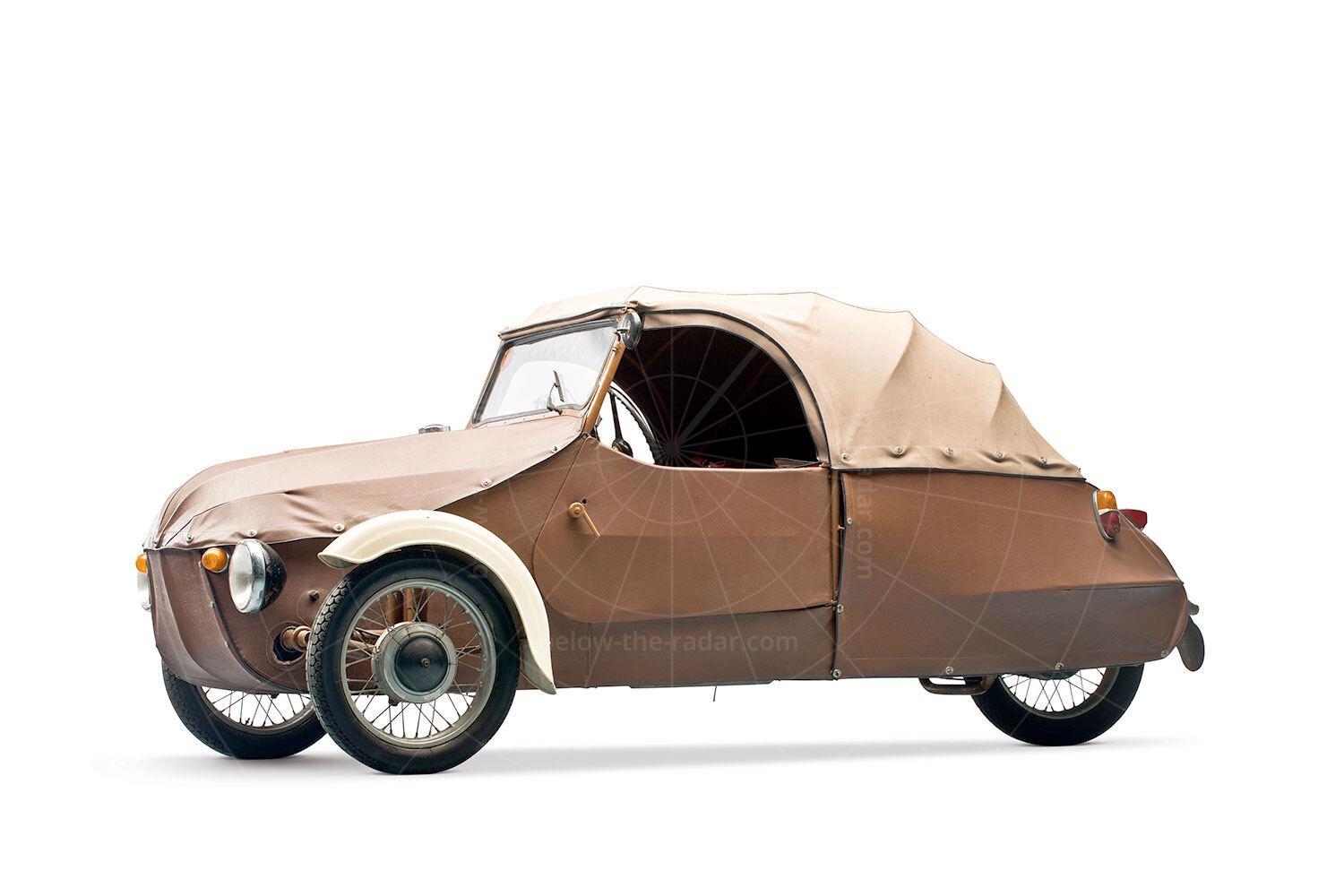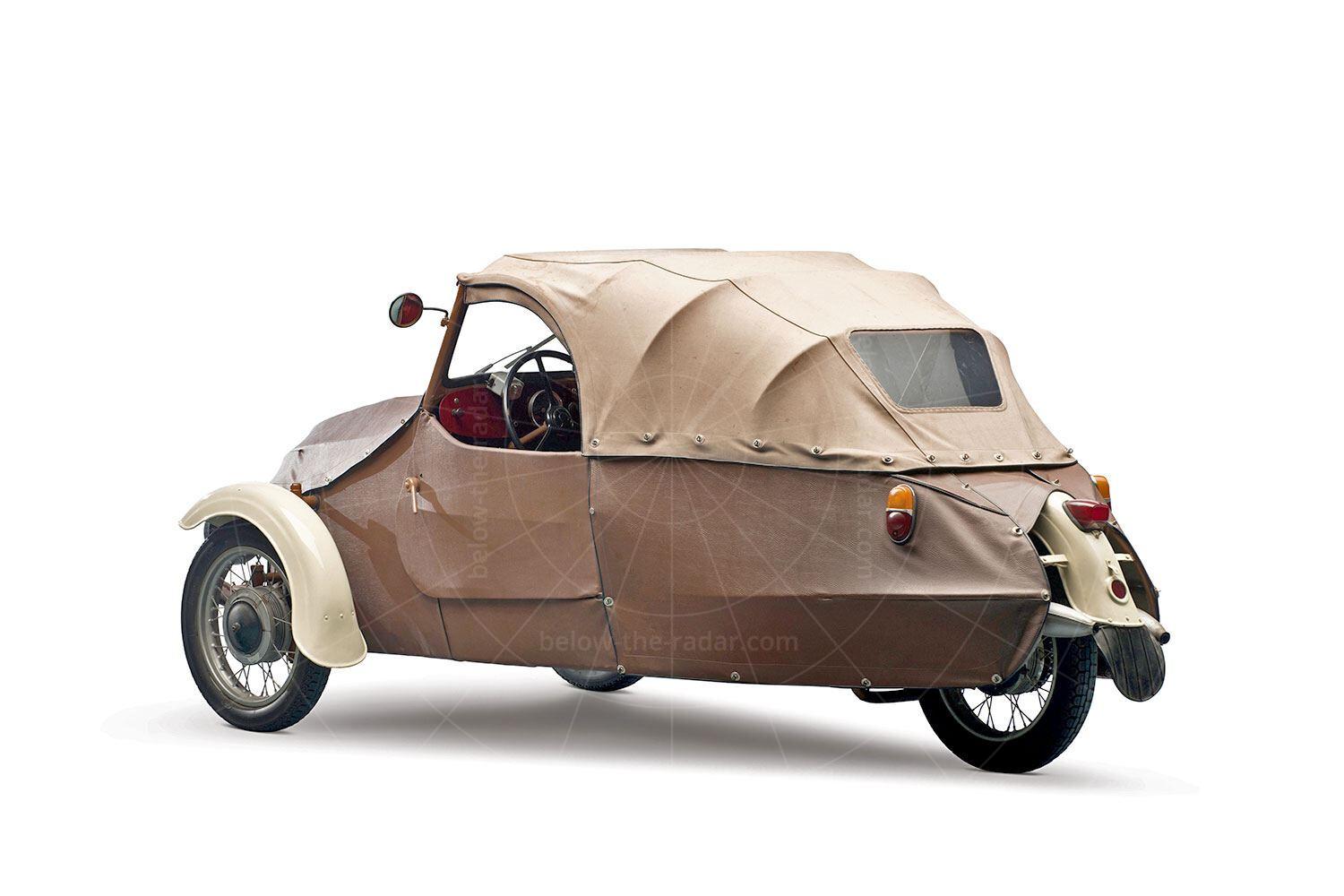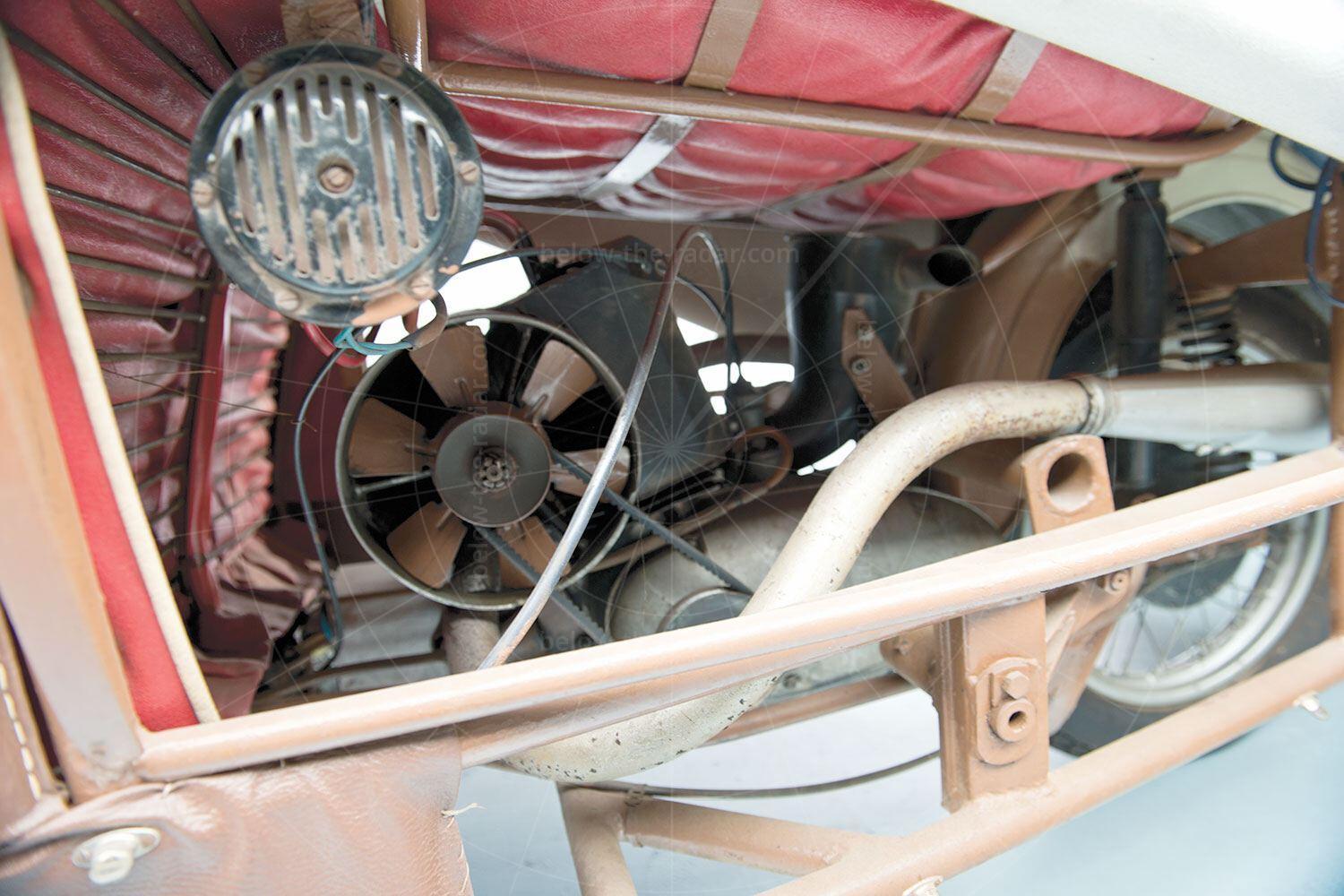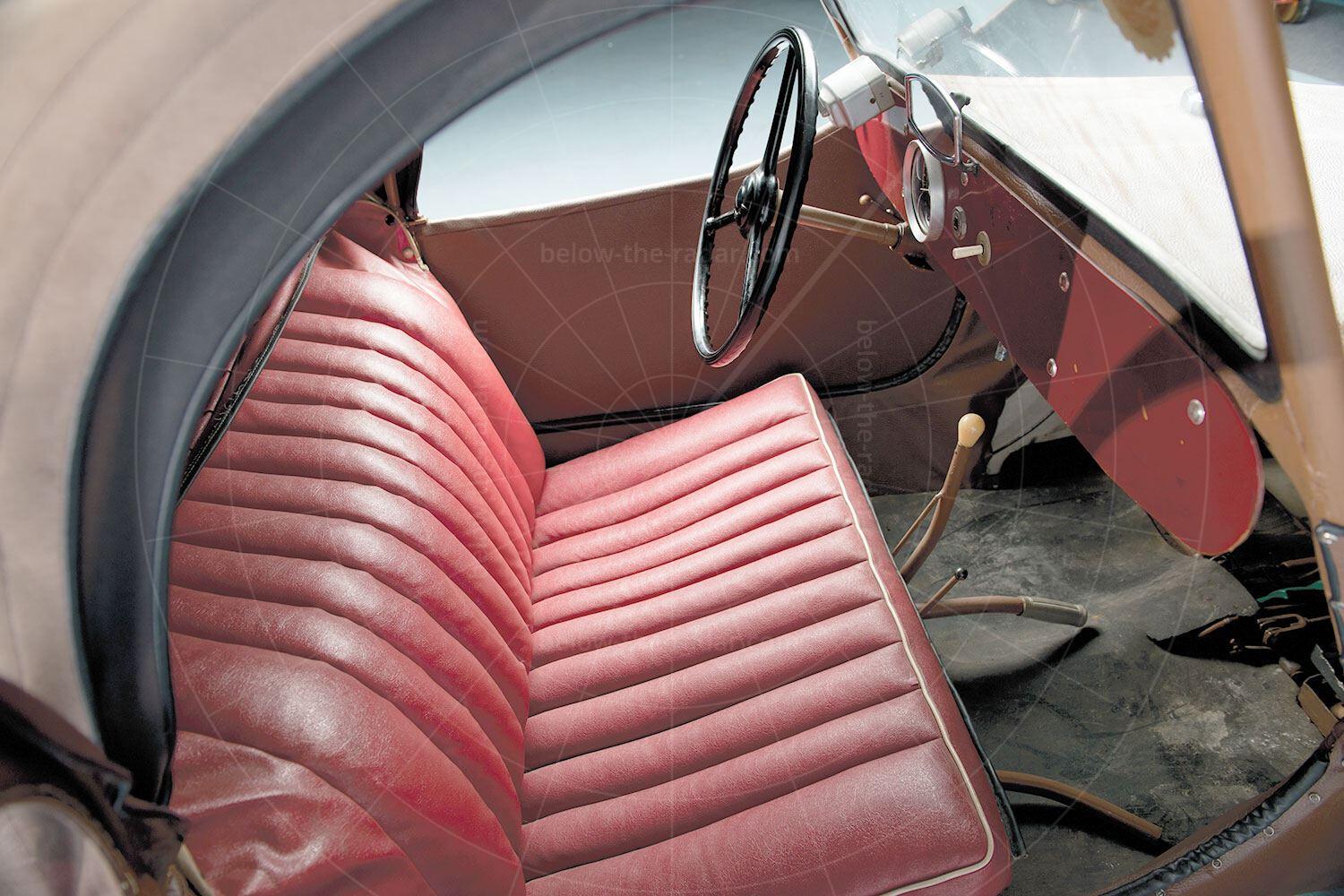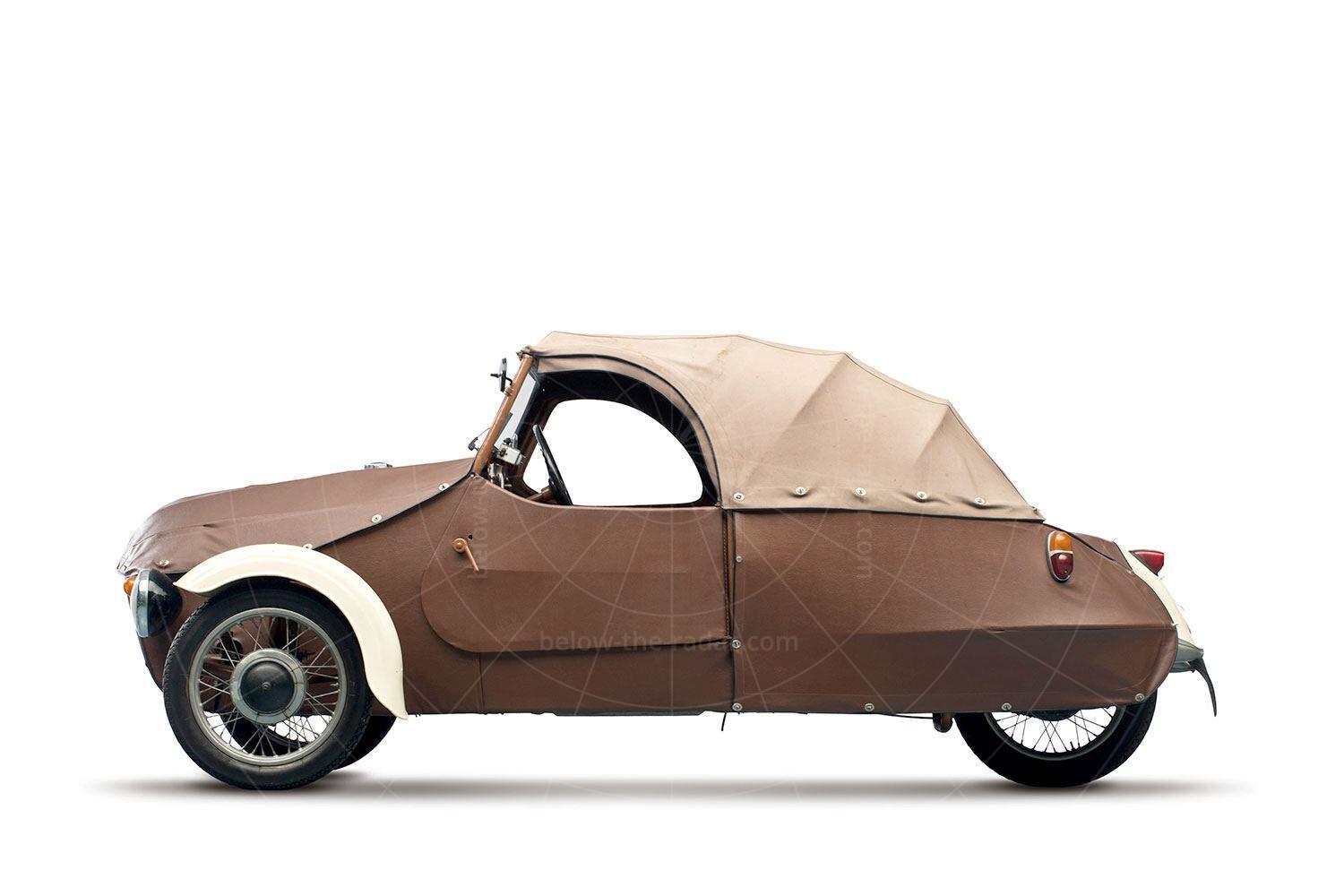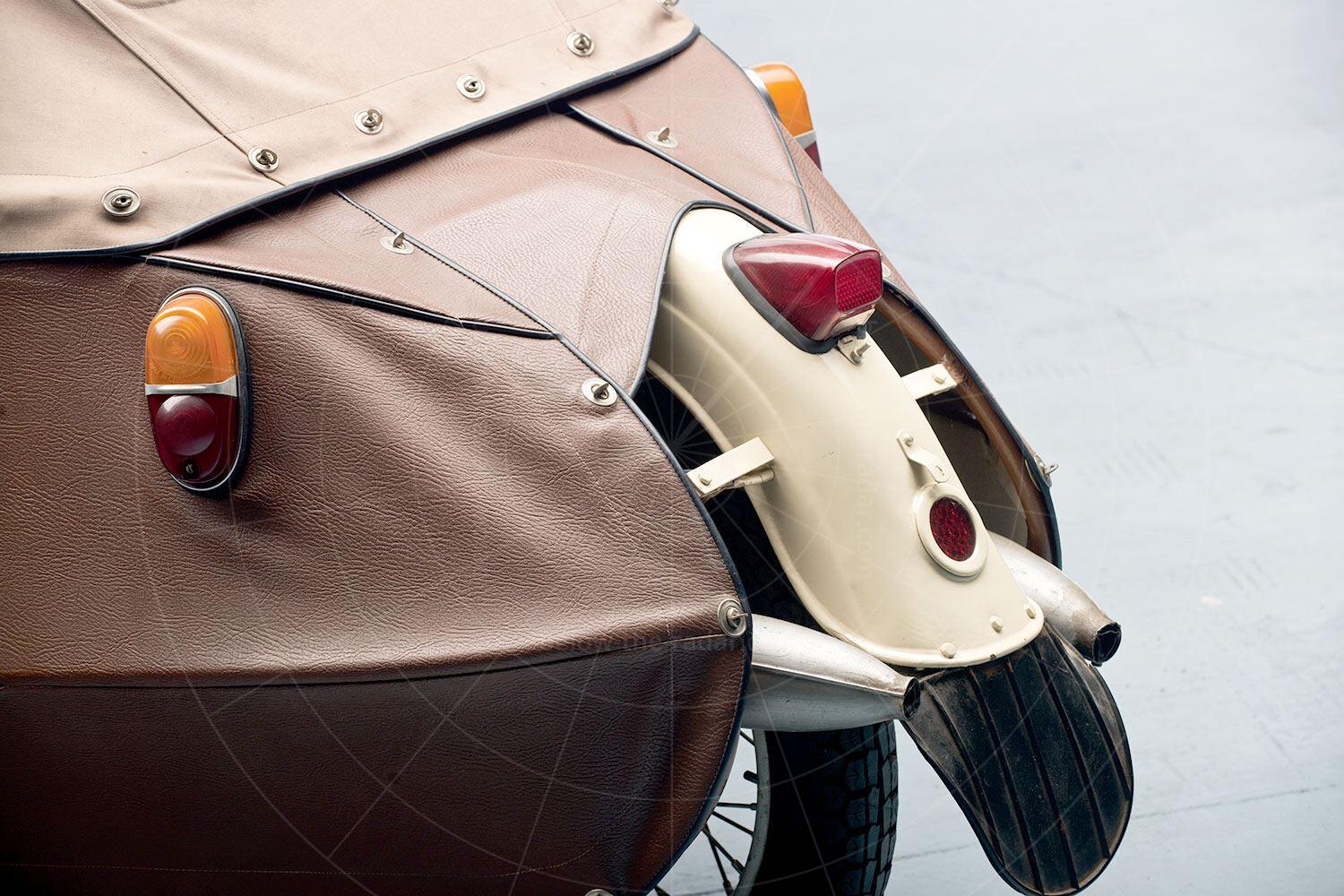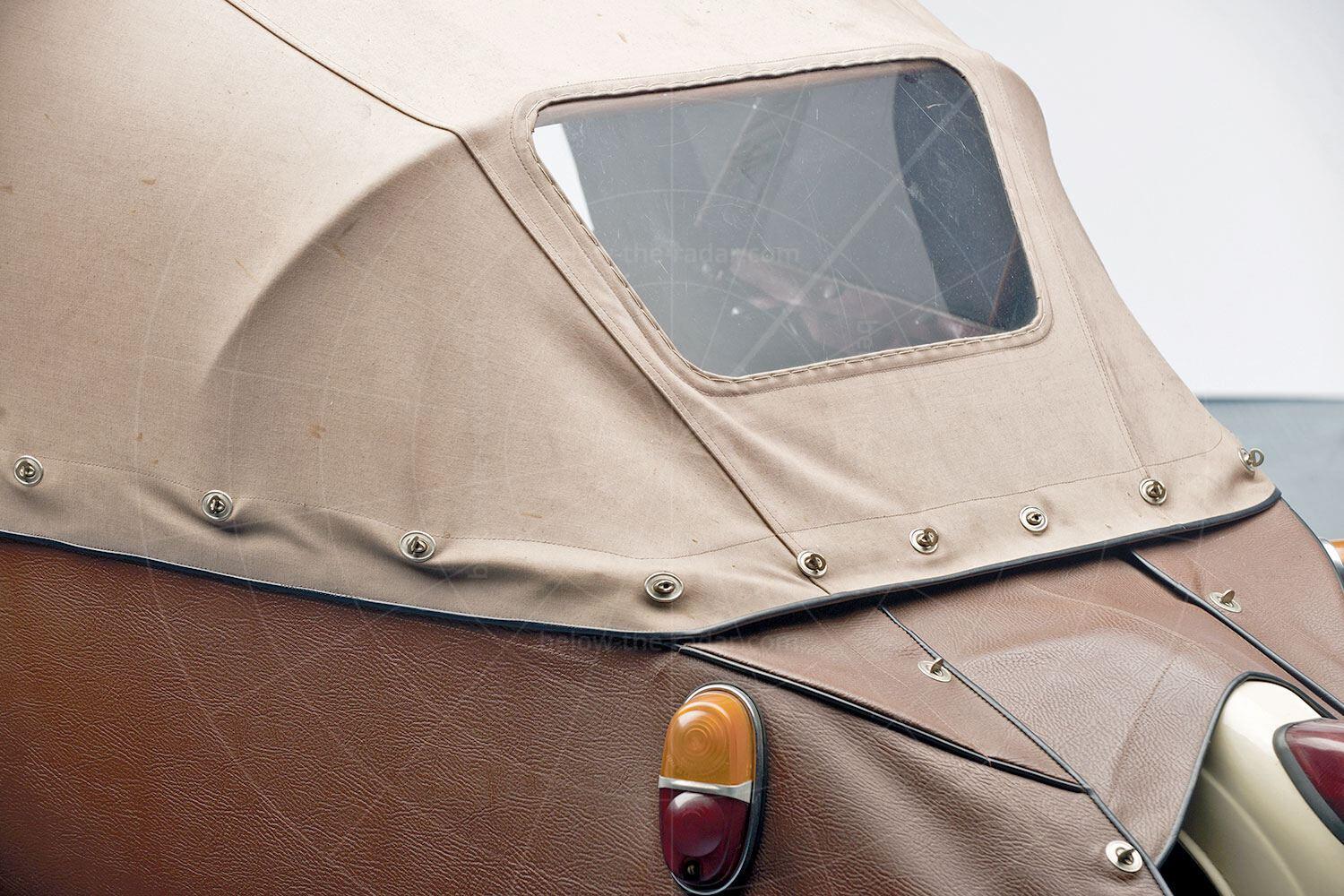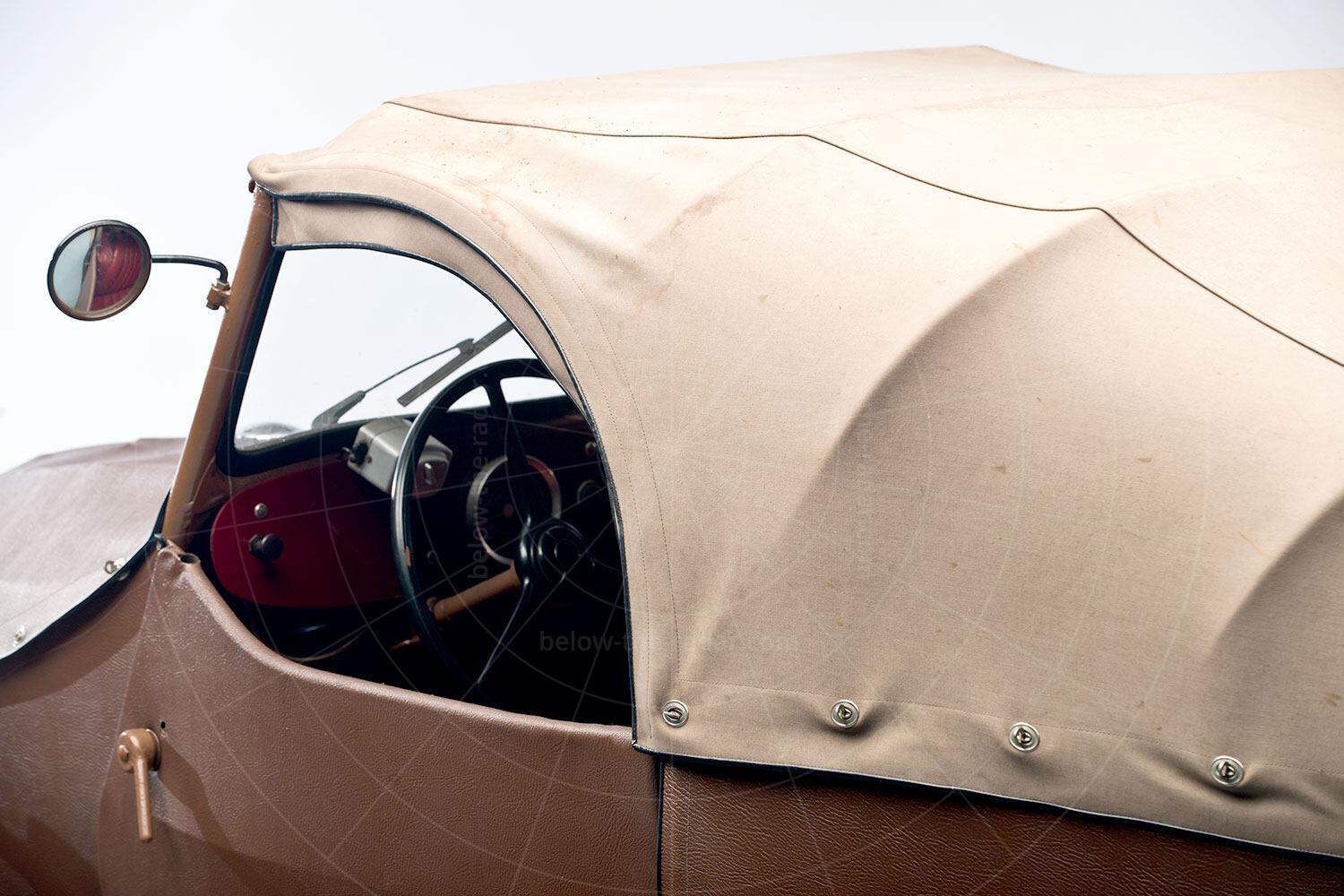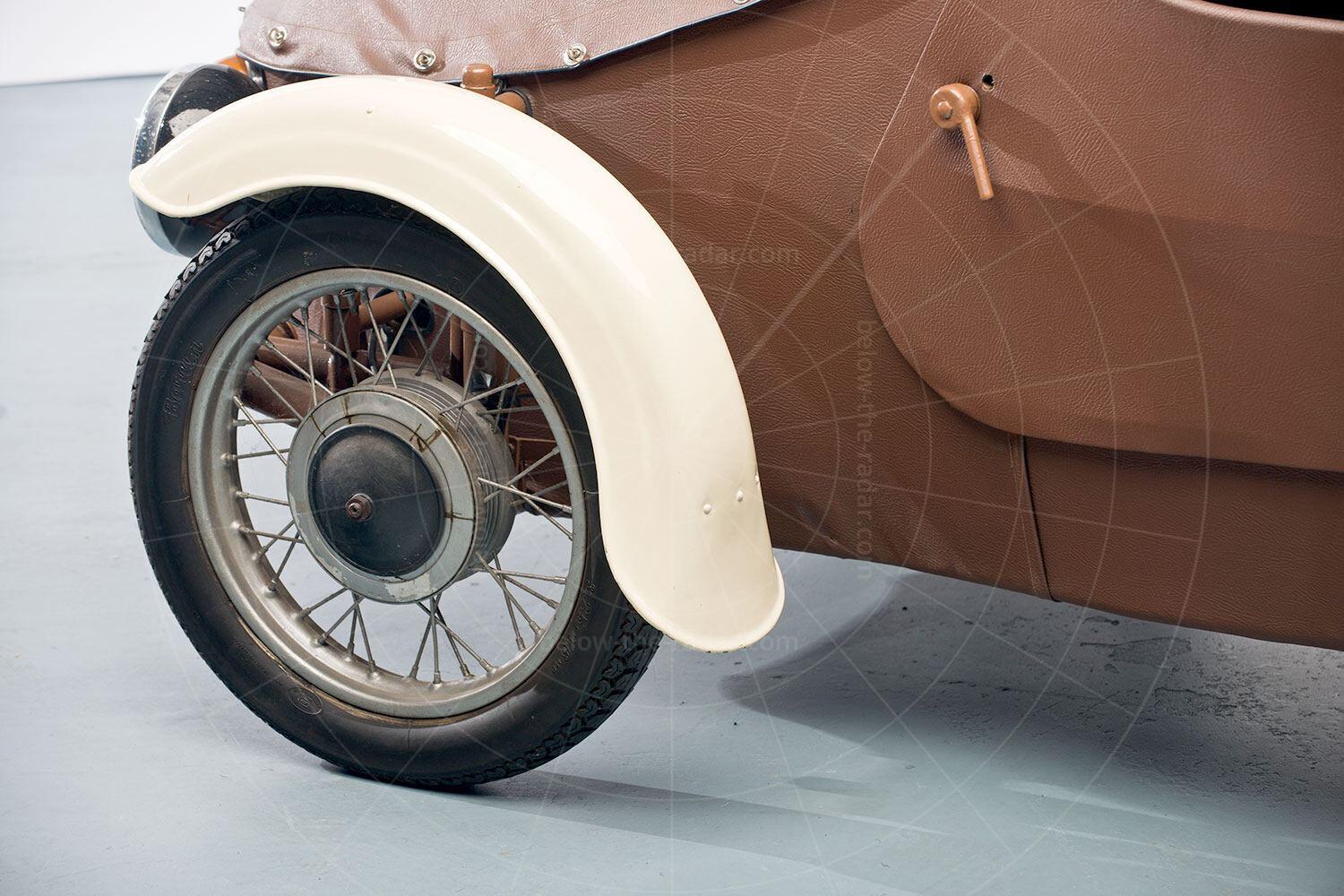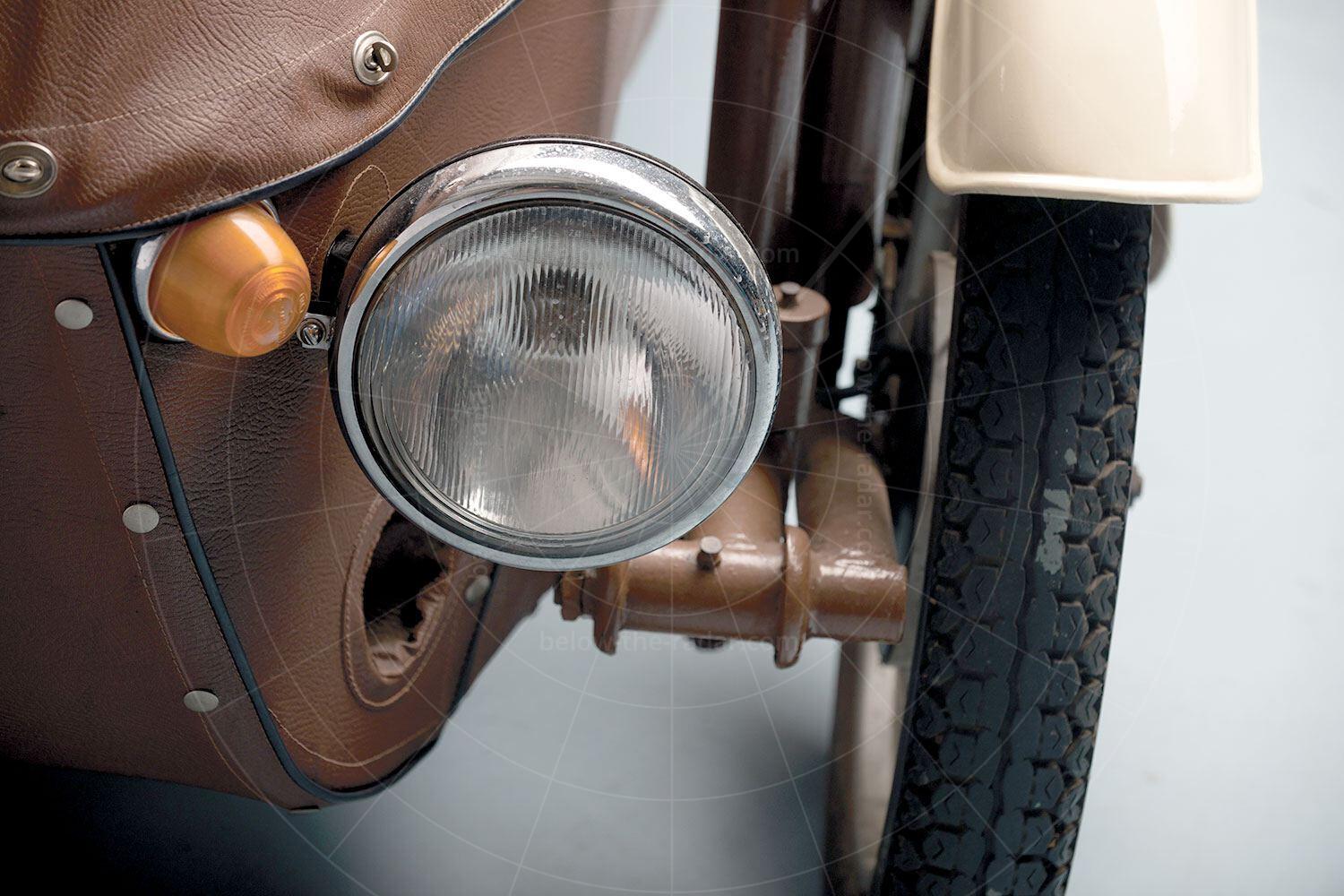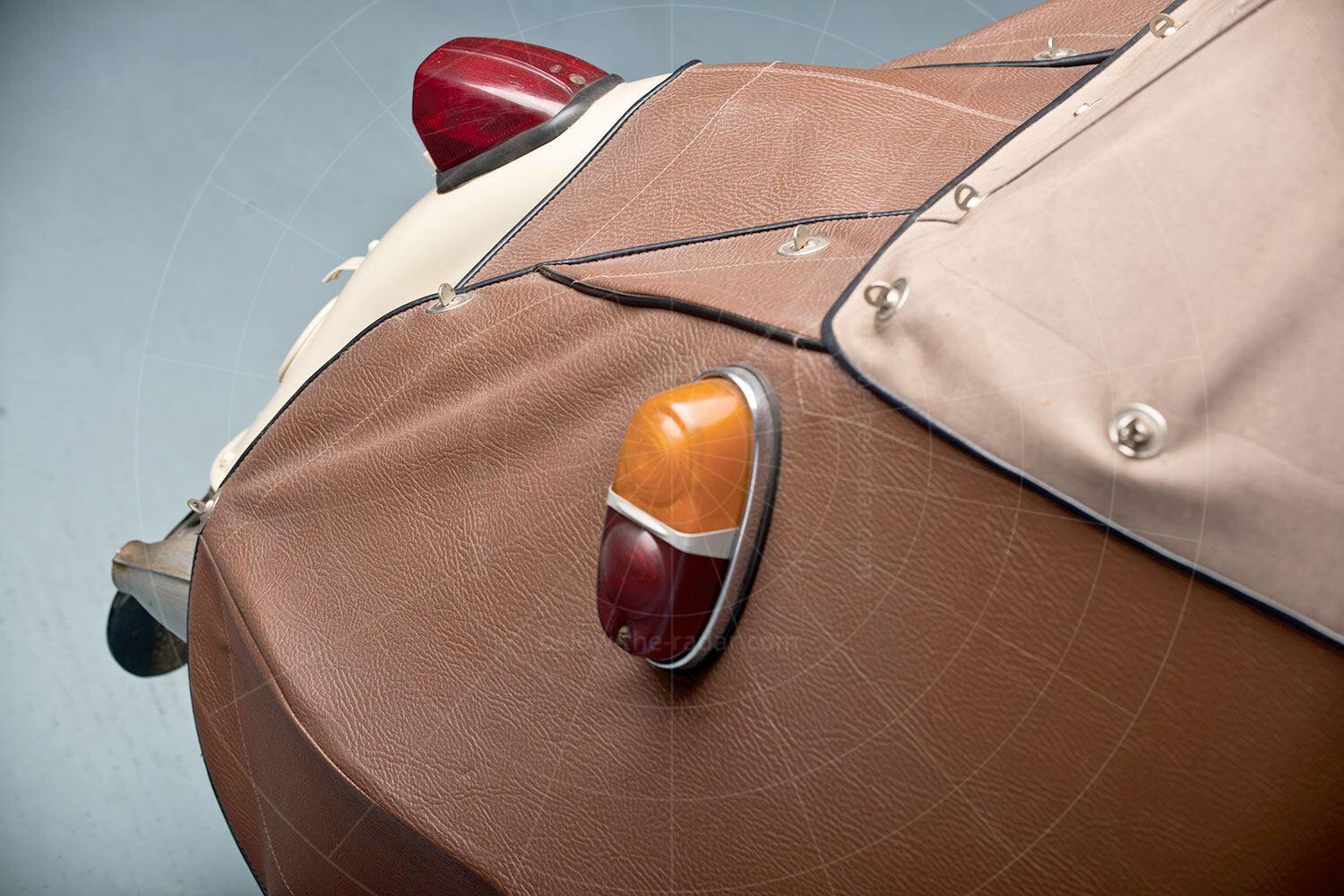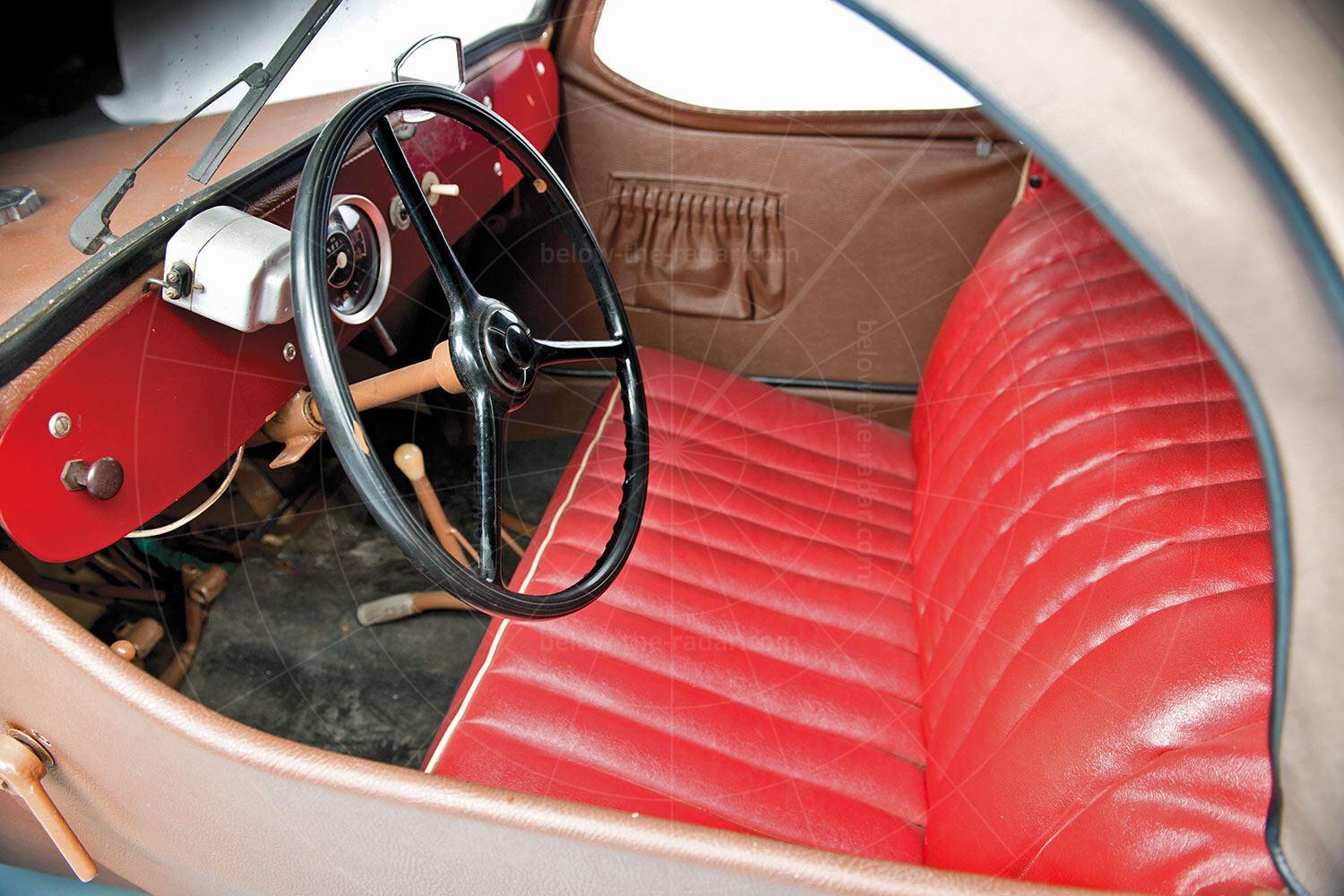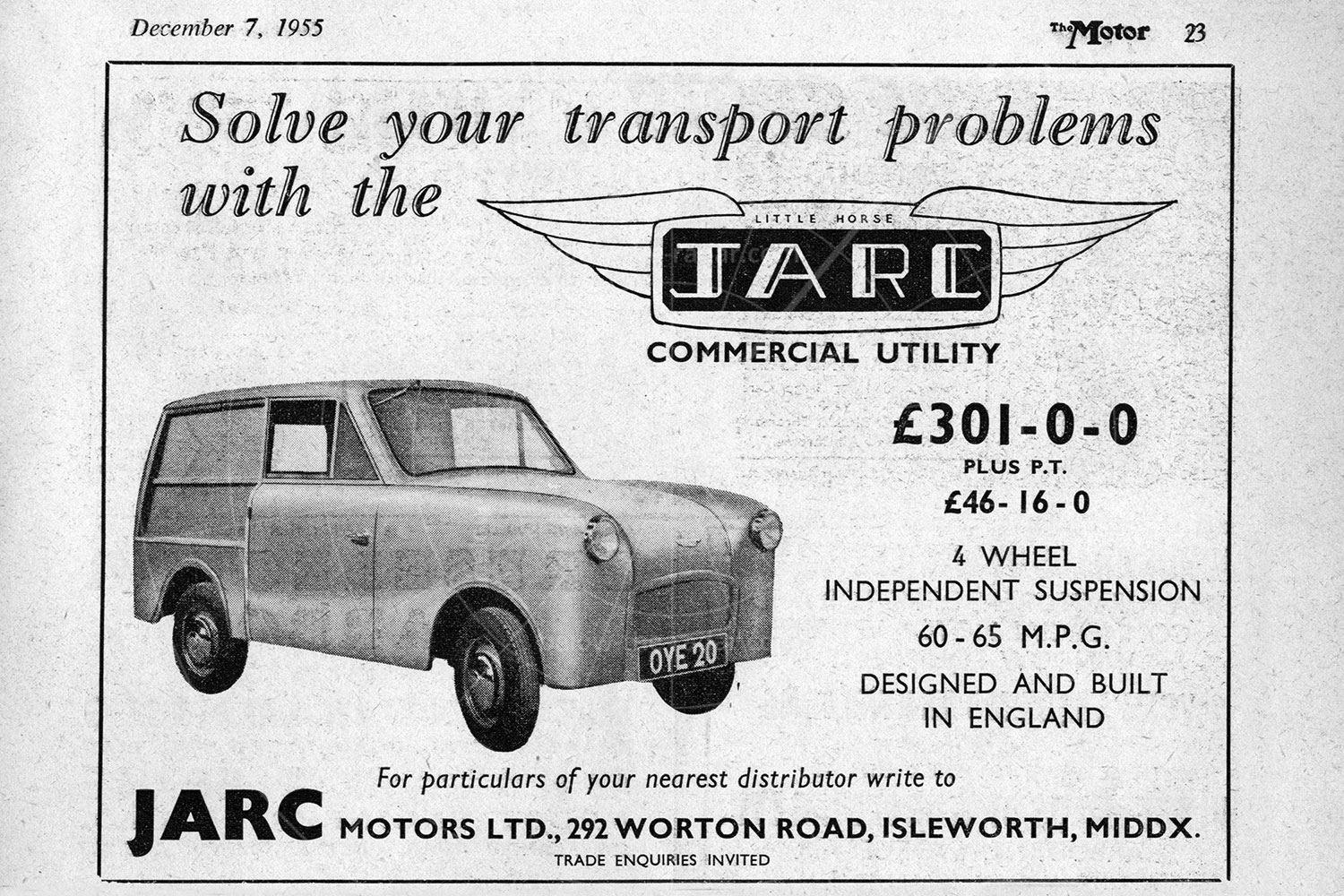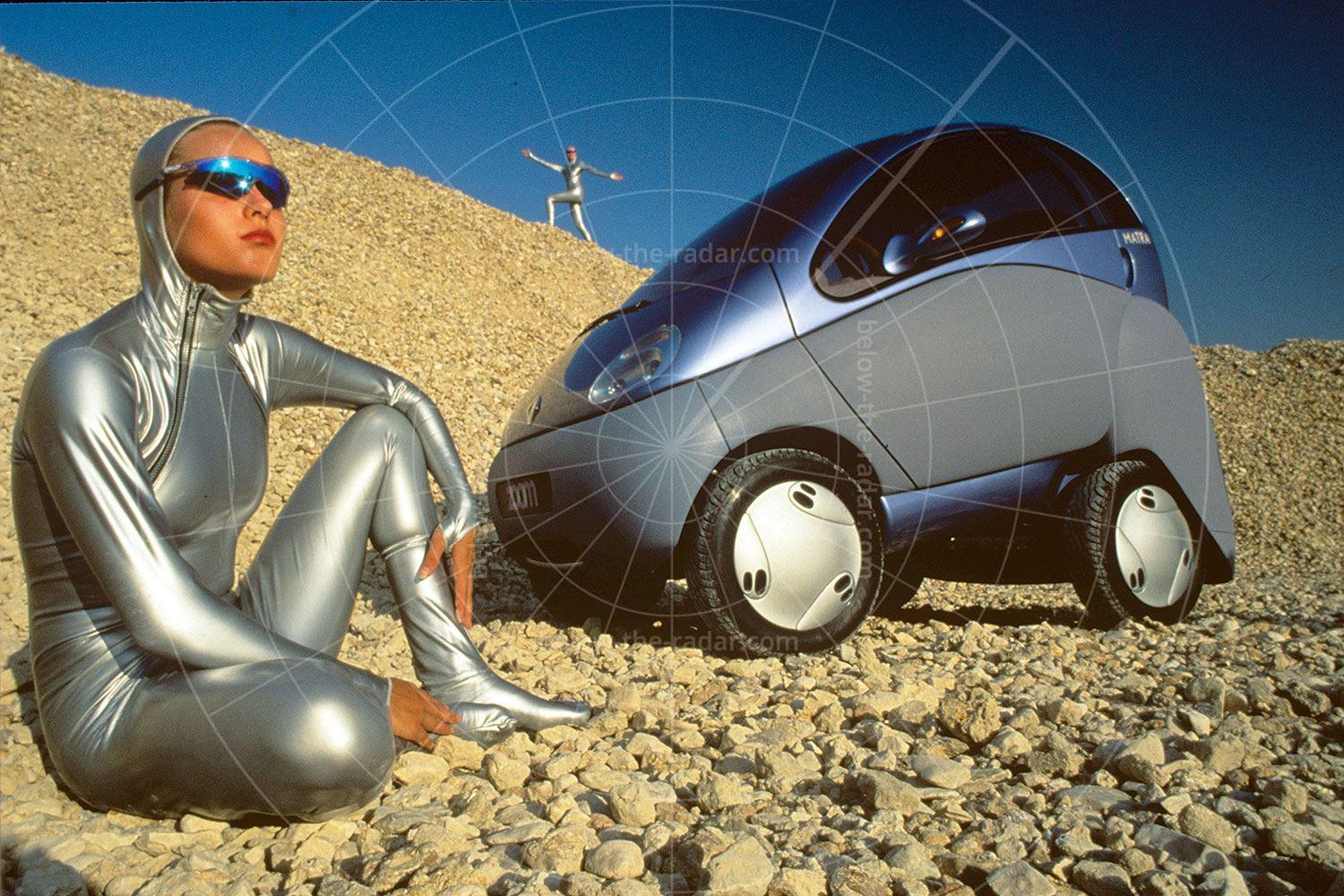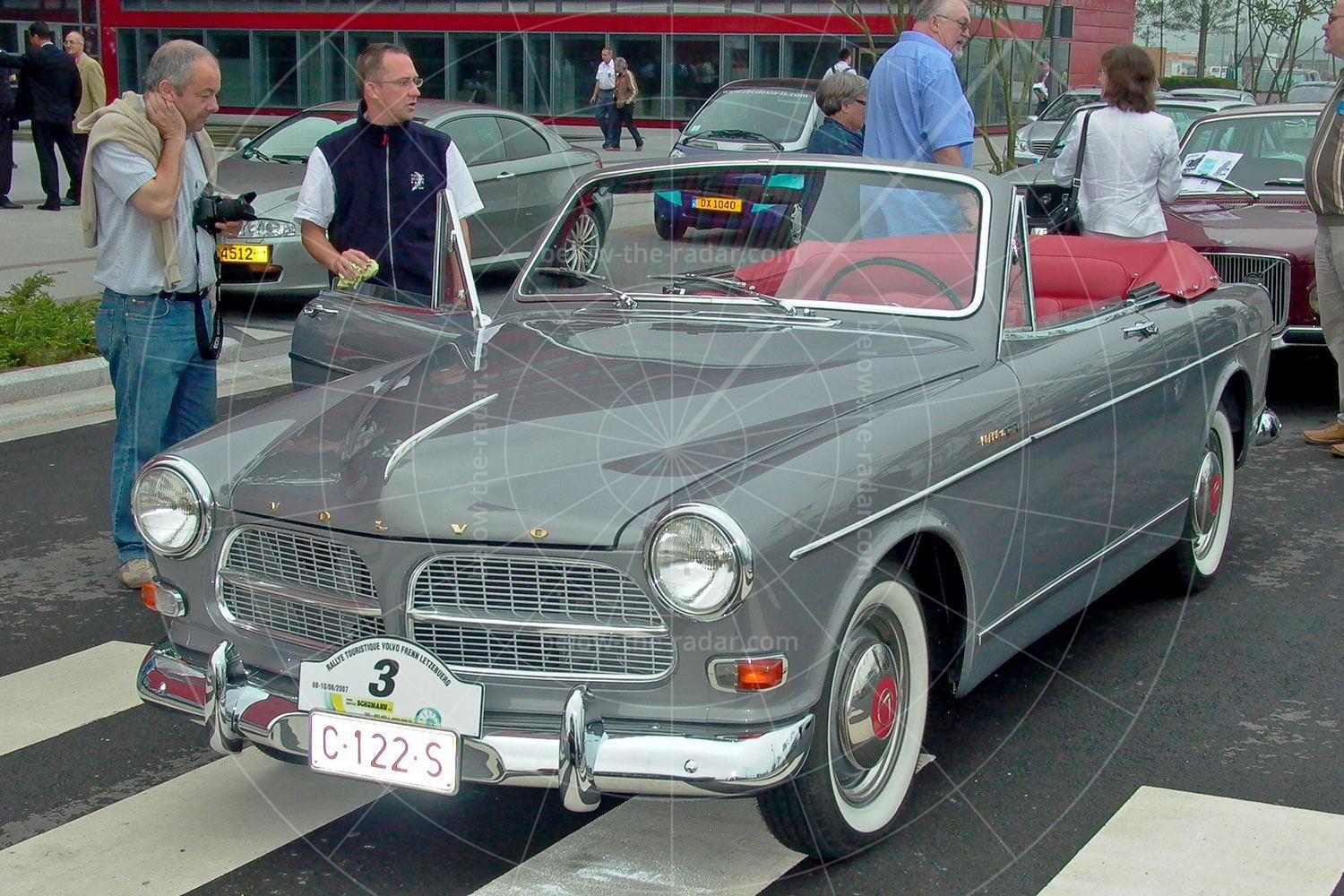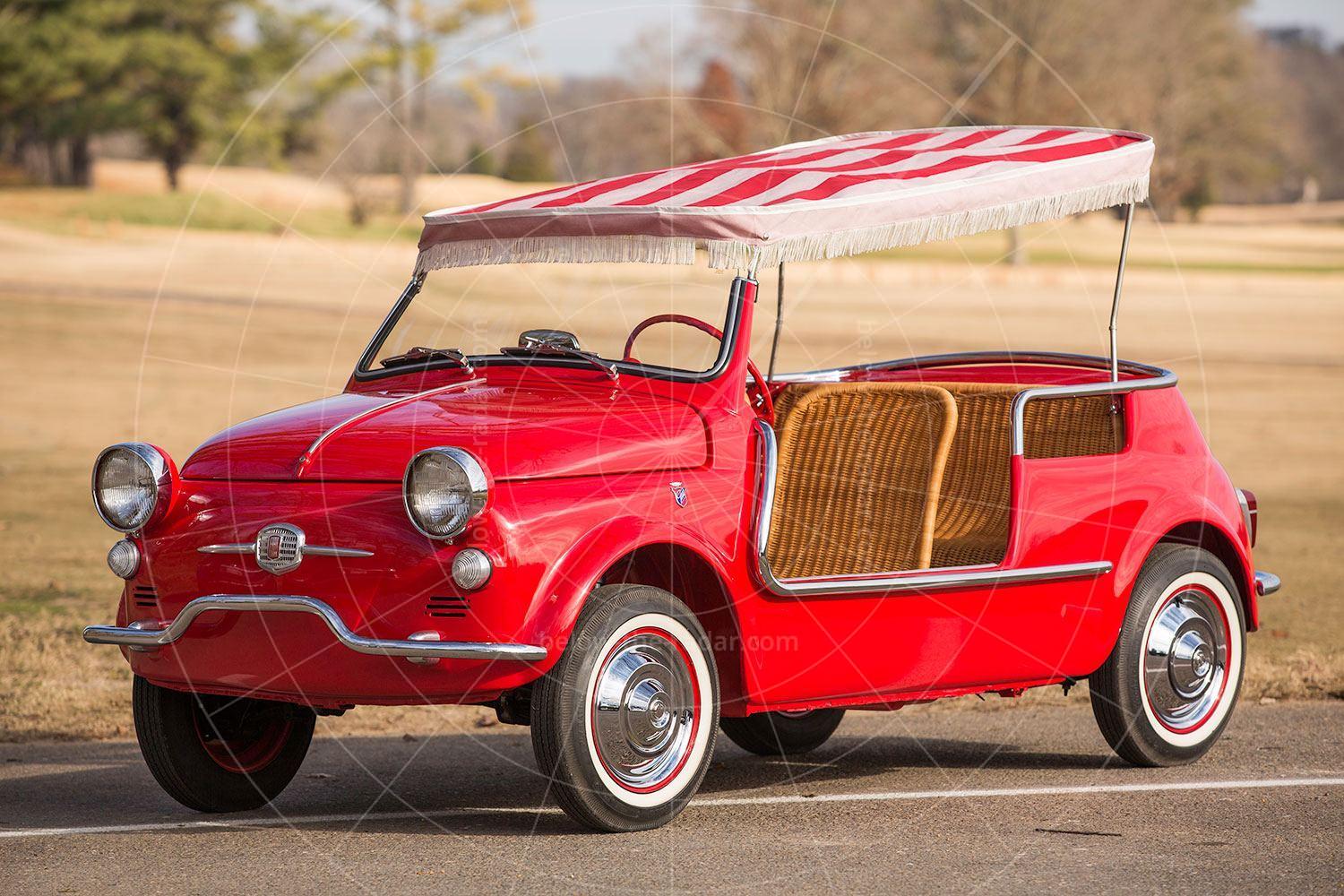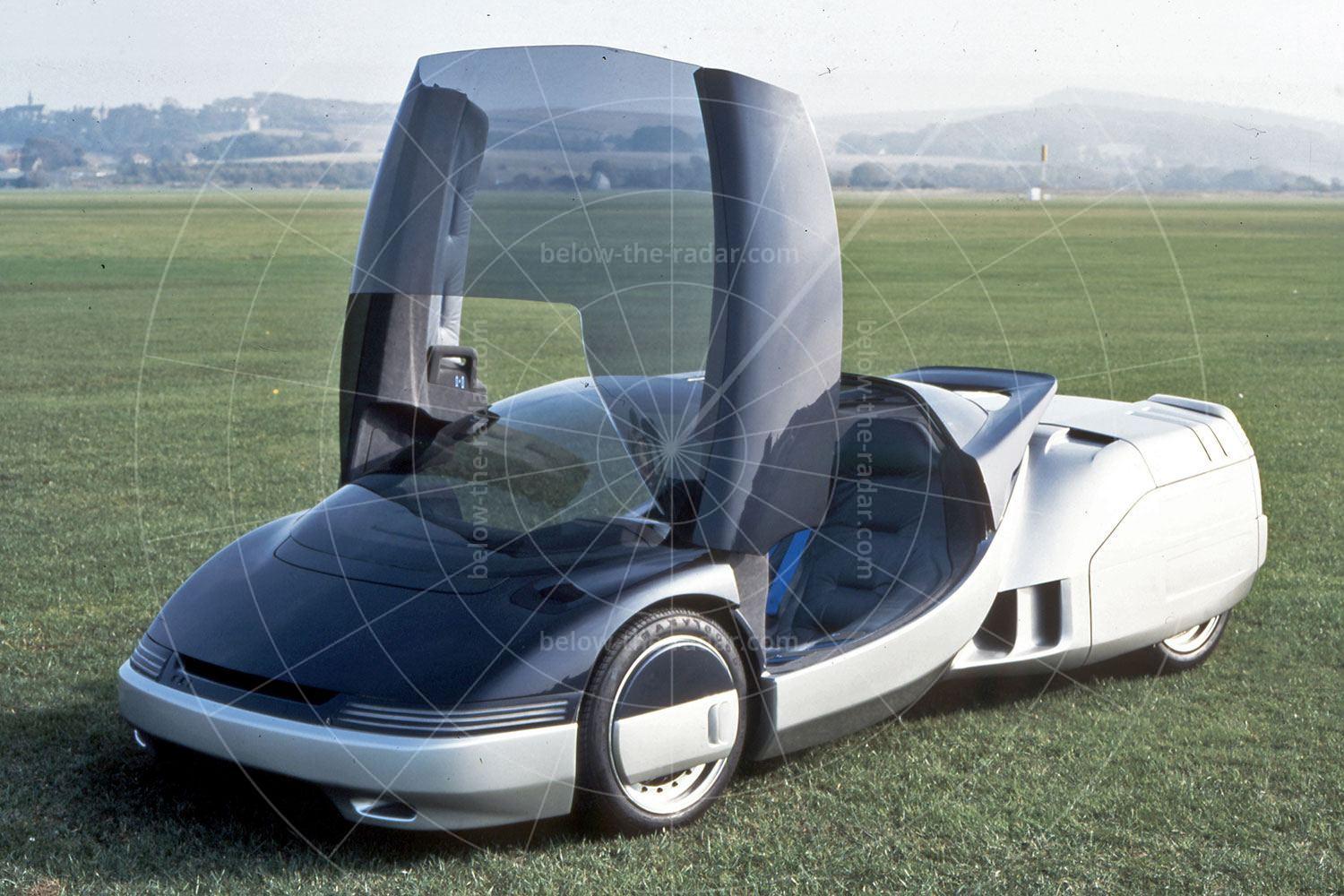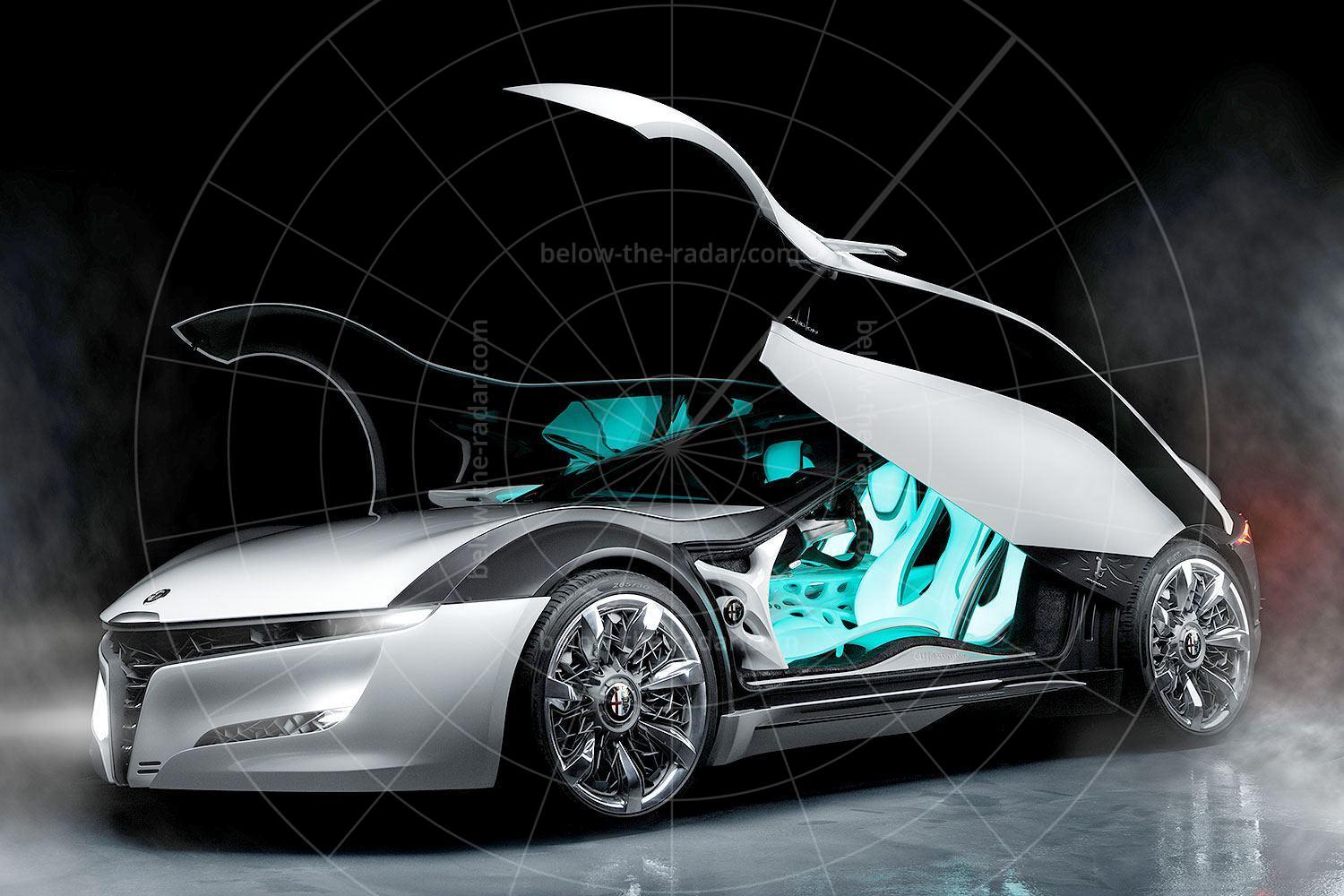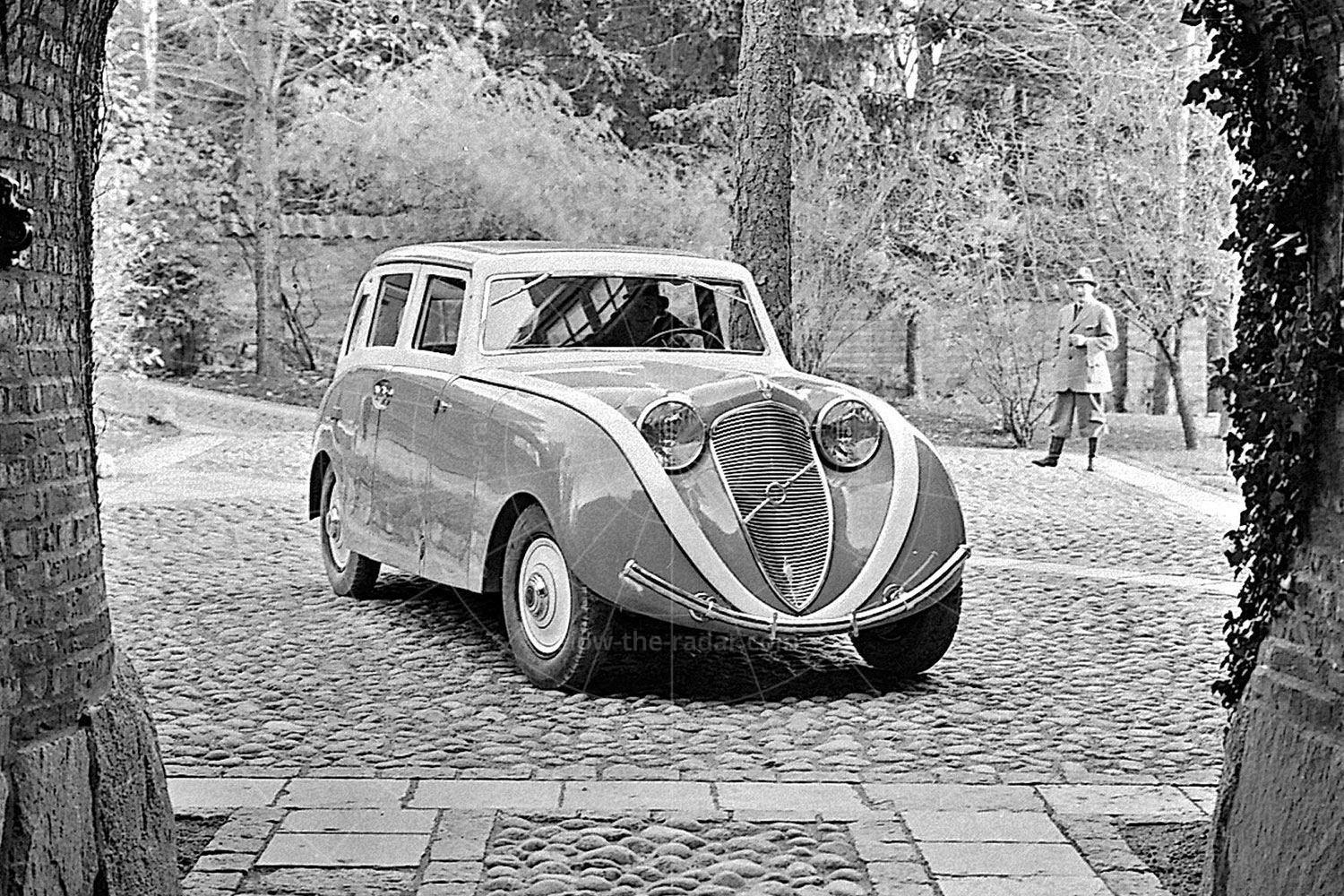Based in Parnik, Czechoslovakia, the Stransky brothers (Frantisek and Mojmir) opened a bicycle repair shop in 1936. Inspired by the simplicity of Morgan's three-wheelers, the brothers decided in 1943 to build their own three-wheeled economy car, aimed at disabled veterans. That year their first prototype was constructed, using a tubular steel chassis and sheet metal for the bodywork.
By the time the first batch of a dozen production cars was made in 1945, the duralumin bodywork had been swapped for a leathercloth-type material called Igelit, but the original tubular chassis was retained. Those Igelit panels were held on by press studs which made them easy to replace if they got damaged.
The two brothers experimented with engines, with those first Oskars (as the car was now called) receiving a mix of 150cc, 250cc and 300cc two-stroke air-cooled engines. As an exercise in cheap motoring the Oskar was a triumph, as it cost about a quarter of the cost of a more typical car. The vehicle was about as faithful as one could get to the true spirit of the classic cyclecar. Components such as the engine, wheels, wings, and even the teardrop-shaped fuel tank were pure motorcycle.
In 1950 the Stranskys' design was taken over by a government co-operative called Velo, and their workshop was transferred to Hradec-Kralove, later renamed Velorex. A year later half a dozen workers and the machinery to build the Oskar 54 (as it was now called) were once again relocated, this time to Solnice, for production to be ramped up.
While just 120 Oskars were built in the whole of 1951, and 180 the following year, by 1954 production was running at the rate of 40 cars each month. This wasn't a good year for the Stransky brothers though, because in January Frantisek was killed while testing an Oskar prototype, then later that year Mojmir was sacked from the company for refusing to join the Communist Party of Czechoslovakia.
In 1956 the company that made the Oskar was renamed the Velorex Oskar before later reverting to simply 'Velorex', and despite the car's advancing years it was in demand more than ever. Half of the cars made were going to disabled Czechs while the rest were being distributed throughout other Eastern Bloc countries such as Hungary, Poland, East Germany and Bulgaria. By 1959 120 Oskars were leaving the factory each month and in 1961 the investment continued with a new factory opening up to share the workload.
Until 1963 the Oskar had been fitted with a choice of 172cc or 249cc single-cylinder engines, but from this point on the bigger engine was swapped for a 350cc Jawa unit, while the interior was also spruced up a little – not that the Oskar was ever what you would call luxurious.
Oskar production continued right up to 1971 when an all-new four-wheel model took over, with the very catchy name of 453. But it was a disaster and production stopped after just two years, as the 453 couldn't compete with the Trabant which was much more usable and just as affordable – even if the waiting list to get one ran into several years. The joys of living in a communist regime…
| Vital statistics | |
|---|---|
| Produced | 1945-1971, Czechoslovakia |
| Number built | 15,300 (all models) |
| Engine | Rear-mounted, 249cc, 1-cylinder |
| Transmission | 4-speed manual, rear-wheel drive |
| Power | 9bhp at 4250rpm |
| Top speed | 50mph approx |
- The Velorex Oskar pictured was sold by RM Sotheby's in 2013 for $12,650. Many thanks to RM Sotheby's for the use of its pictures to illutstrate this article.

